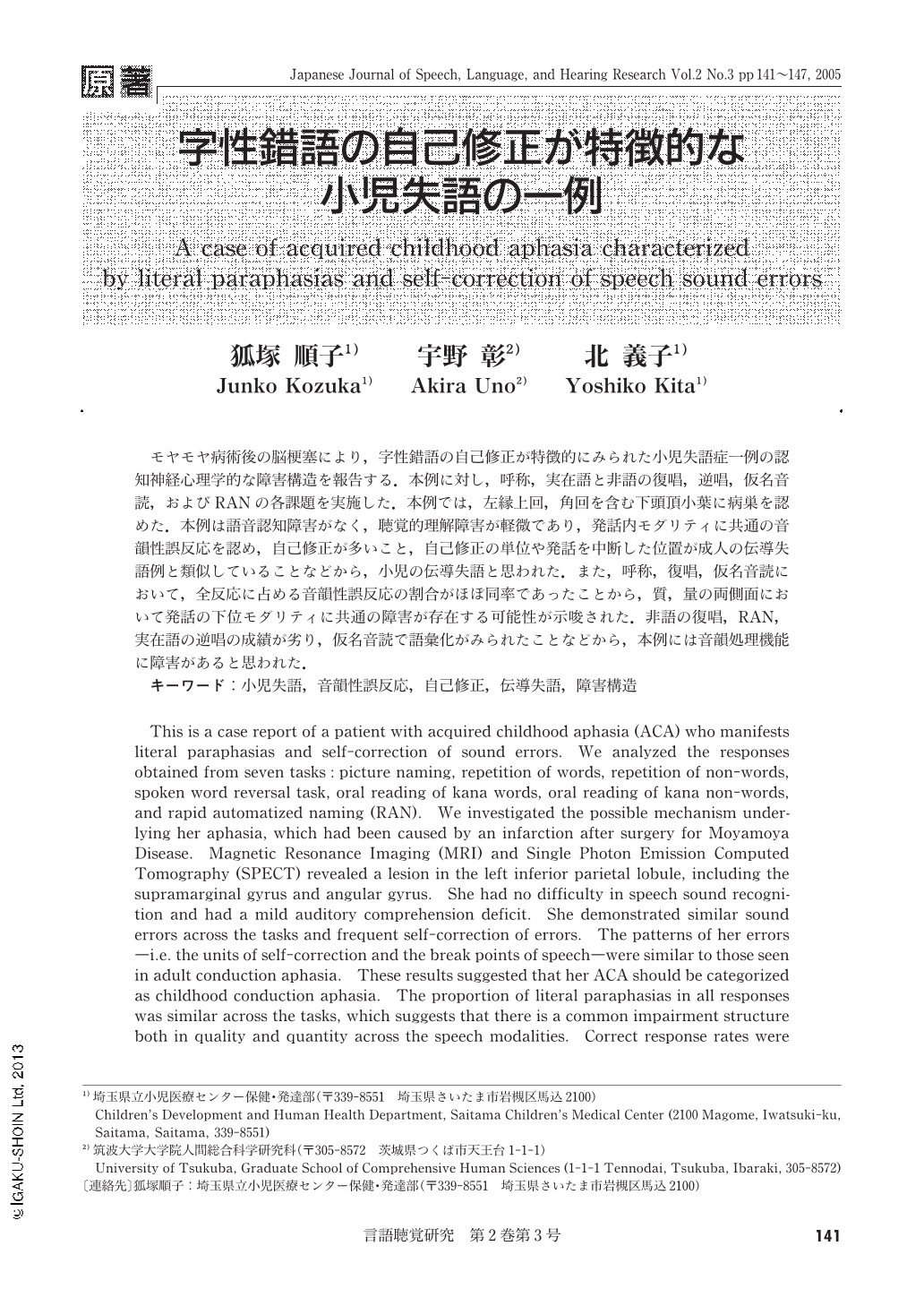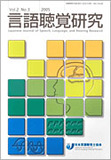Japanese
English
- 有料閲覧
- Abstract 文献概要
- 1ページ目 Look Inside
- 参考文献 Reference
モヤモヤ病術後の脳梗塞により,字性錯語の自己修正が特徴的にみられた小児失語症一例の認知神経心理学的な障害構造を報告する.本例に対し,呼称,実在語と非語の復唱,逆唱,仮名音読,およびRANの各課題を実施した.本例では,左縁上回,角回を含む下頭頂小葉に病巣を認めた.本例は語音認知障害がなく,聴覚的理解障害が軽微であり,発話内モダリティに共通の音韻性誤反応を認め,自己修正が多いこと,自己修正の単位や発話を中断した位置が成人の伝導失語例と類似していることなどから,小児の伝導失語と思われた.また,呼称,復唱,仮名音読において,全反応に占める音韻性誤反応の割合がほぼ同率であったことから,質,量の両側面において発話の下位モダリティに共通の障害が存在する可能性が示唆された.非語の復唱,RAN,実在語の逆唱の成績が劣り,仮名音読で語彙化がみられたことなどから,本例には音韻処理機能に障害があると思われた.
This is a case report of a patient with acquired childhood aphasia (ACA) who manifests literal paraphasias and self-correction of sound errors. We analyzed the responses obtained from seven tasks:picture naming, repetition of words, repetition of non-words, spoken word reversal task, oral reading of kana words, oral reading of kana non-words, and rapid automatized naming (RAN). We investigated the possible mechanism underlying her aphasia, which had been caused by an infarction after surgery for Moyamoya Disease. Magnetic Resonance Imaging (MRI) and Single Photon Emission Computed Tomography (SPECT) revealed a lesion in the left inferior parietal lobule, including the supramarginal gyrus and angular gyrus. She had no difficulty in speech sound recognition and had a mild auditory comprehension deficit. She demonstrated similar sound errors across the tasks and frequent self-correction of errors. The patterns of her errors―i.e. the units of self-correction and the break points of speech―were similar to those seen in adult conduction aphasia. These results suggested that her ACA should be categorized as childhood conduction aphasia. The proportion of literal paraphasias in all responses was similar across the tasks, which suggests that there is a common impairment structure both in quality and quantity across the speech modalities. Correct response rates were low for repetition of non-words, RAN, and spoken word reversal task, and she showed lexicalization errors in the kana non-word reading task. From these results, it seems that her impairment is likely to be in the function of phonological processing.

Copyright © 2005, Japanese Association of Speech-Language-Hearing Therapists. All rights reserved.


